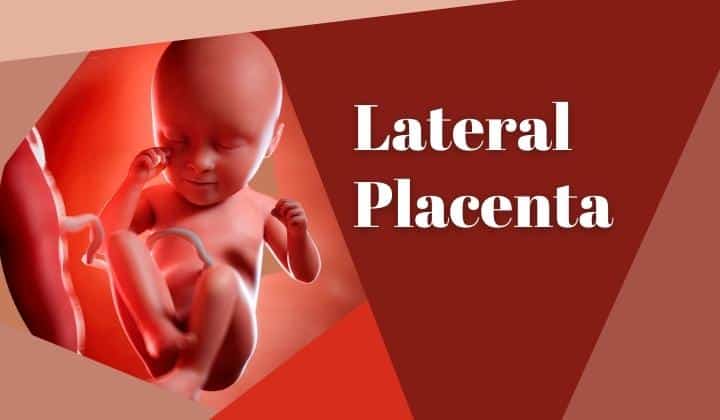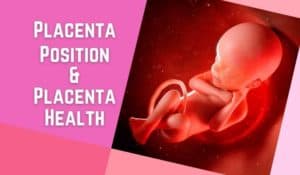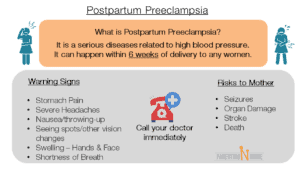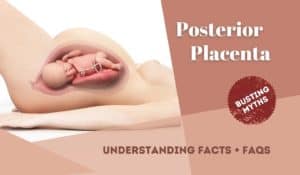Medically Reviewed by: Dr. Veena Shinde (M.D, D.G.O, PG – Assisted Reproductive Technology (ART) from Warick, UK) Mumbai, India
-
Author: Palak Thakkar
- >> Post Created: December 19, 2021
- >> Last Updated: May 3, 2024

Table of Contents
Placenta and its positions play a significant role in a pregnancy. Different placenta positions have their pros & cons, and knowledge about it can help moms-to-be in a big way.
Lateral placenta, unlike fundal, anterior, posterior, and low-lying placenta, is an uncommon placenta position. During my pregnancy, I too had lateral placenta, but sailed through without any major complications, thanks to my doctor’s guidance. So, if you have a placenta on side, let me tell you that it’s fine and you have nothing to worry about.
This article will help you understand more about what it means to have placenta on side and the various lateral placenta risks involved.
What is Lateral Placenta/ Placenta on side?
In simple words, lateral placenta is when the placenta implants either on the right or left side of the uterus. It is also referred to as placenta on side.
‘Is lateral placenta/ placenta on side normal?’ – is a question that has been asked many times, and the answer is – YES!
Placenta implantation is a normal process and it is beyond anyone’s control as to where the egg fertilizes and implants itself. However, the early placenta position may change as the uterus expands to adjust to the growing baby.
The lateral placenta is the most uncommon placenta position, and because of it, the baby gets constant blood flow from one of the uterine and/or ovarian arteries, along with some more contribution from the other uterine artery. This increases the chances of pre-eclampsia (a pregnancy complication caused by high blood pressure) in the mother. However, it mostly does not affect the labor or the baby’s delivery.
Some research has also associated lateral placenta positions to higher chances of having a ‘breech baby’ – a baby who’s lying feet-first at the opening of the uterus, instead of the ideal head-first position.
Lateral Placenta Risks
Studies link placenta implantation on either right or left side of the uterus (placenta on side) to higher occurrences of conditions like preeclampsia, fetal distress in labor, abdominal deliveries, breech baby, and Intrauterine Growth Retardation (IUGR).
However, as someone who has experienced having a lateral placenta, I can say it is good to be informed, but don’t fuss about it too much! Stay active, happy, and positive and go for your routine check-ups. Do not shy away from getting clarifications even about minor doubts in your mind from your doctor. You can have a smooth pregnancy even with lateral placenta.
It is important to understand that having placenta on side itself is not a common placenta position; therefore, the risks that are linked to it would also be uncommon. Nevertheless, it is always important to be well-informed.
Pre-eclampsia
This is a rare condition that can develop after 20 weeks of pregnancy, wherein the mother suffers from high blood pressure and protein is found in her urine. A research has pointed out that lateral placenta position can increase the chances of pre-eclampsia; the risk ratio being 3:1 as compared to placenta positions that are centrally located.
Experts believe pre-eclampsia begins in the placenta, especially placenta on side. Ideally, in the earlier stages of pregnancy, new blood vessels develop and grow to provide blood to the placenta. However, in case of pre-eclampsia, these blood vessels fail to either develop or evolve properly. They remain narrow and respond in a different manner to hormonal signaling. This is turn limits the blood flow through them.
This condition can be managed easily with oral medication or through IV if discovered in the early stages of pregnancy. Ask your doctor about the symptoms and other details if you have placenta on side.
Read this next
Fetal Distress in Labor
As the name itself suggests, a baby who is compromised when the mother is in labor or if there is any distress during the delivery to the baby. This is a clear sign that the baby isn’t doing well, as it isn’t receiving enough oxygen through the placenta.
Medically, fetal stress is also called Non-Reassuring Fetal Status (NRFS). This status mainly informs us about the baby’s health, especially during the later stages of pregnancy as well as during labor.
The causes for fetal distress could be many, but studies have shown a connection between lateral placenta position and fetal distress in labor. Discuss your concerns with your doctor.
Breech Baby
Ideally, when a baby is ready to be born at the time of the delivery, its optimal and safest position is head-down, towards the womb’s opening. However, a breech baby is when the position is head-up and feet towards the cervical opening.
During pregnancy, the uterus provides enough space for the baby to change its position by the time it is ready to be born. By the 36th week of pregnancy, most babies do turn into the optimal position. Although as rare as 4 in 100 births, breech babies fail to turn to this position and that’s when a C-section is required.
Studies have revealed that lateral placenta position is possibly one of the factors for breech baby cases. Talk to your doctor to know more if you have placenta on the side.
Intrauterine Growth Retardation or Fetal Growth Restriction
The condition when the unborn baby is not growing at a normal rate in the mother’s womb, and hence, is smaller than it should be at that time, is called Fetal Growth Restriction (FGR). This was previously called Intra-Uterine Growth Restriction (IUGR). Lateral placenta position can be one of the causes for this condition.
If the condition is mild, then there may not be much concerns about long-term problems. In fact, it is observed that babies who suffered the condition mildly catch up in height and weight by the time they are 2 years old.
Personally, with my lateral placenta position, my daughter was born premature through a C-section and was underweight at the time of her birth. But thanks to my doctor’s close observations and guidance, she did not go into distress and in fact gained weight to be at par with the normal weight of babies by the time she was a year old.
So I insist that do not let such conditions dishearten you; stay positive and follow your doctor’s advice and all will be well.
Abdominal Deliveries
Abdominal deliveries or C-section deliveries are the way to go in most of the cases where the placenta position is lateral. This is because lateral placenta position can give rise to some conditions, like pre-eclampsia, fetal distress in labor, etc., which predominantly require a C-section.
In Conclusion
So a lateral placenta position or having placenta on side might not be the best position when it comes to the delivery of the baby, as it can cause a few distressing conditions for the mother and the child.
Do note that its not necessary that if you have placenta on side, then you would get the any of the lateral placenta risks mentioned in the article. Placenta on side is a very rare condition and the lateral placenta risks are even rarer.
So don’t worry you could have a smooth sailing pregnancy even though you are diagnosed with a placenta on side. All you need to do is keep calm, stay informed, listen and speak to your doctor and follow your intuitions to get past any slight doubts you get on your pregnancy journey.
The path for a mother with lateral placenta position may be less smooth, but with proper care and observation, it can come back on track and give you all the joys of motherhood! Just stay positive mommies!
Happy Pregnancy!











Some really quality blog posts on this site, saved to fav.
Superb website you have here but I was wanting to know if you knew of any forums that cover the same topics discussed here? I’d really love to be a part of group where I can get suggestions from other experienced individuals that share the same interest. If you have any recommendations, please let me know. Cheers!
That is a really amazing resource that you’re offering and you just provide it away cost-free!! I that can compare with discovering websites which comprehend the particular valuation on providing you with fantastic learning resource for zero cost. We truly dearly loved examining this web site. Have fun here!
I simply wanted to thank you for such a beautiful explanation.
Fantastic post and very well researched info. certainly like your web site.
Keep up the good work.
Thank you for this. Thats all I can say. You most definitely have made this into something thats eye opening and important. You clearly know so much about the subject, youve covered so many bases. Great stuff from this part of the internet.
Thank you Lin for the encouraging words.
I am happy our article helped to you.
Thank you so much for this. I was wondering if there is a recommended sleeping position for a right lateral placenta? Many thanks
Thank you for the post on your blog. Do you provide an RSS feed?
Yes we do Steven.
Thanks for checkin-out the blog.
I hope you liked it.